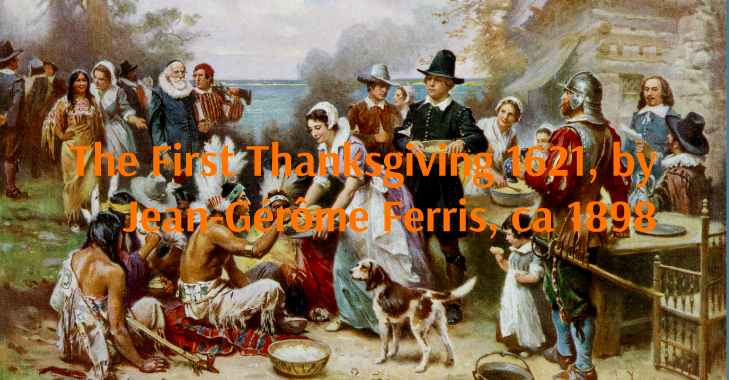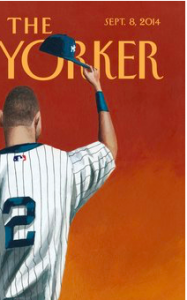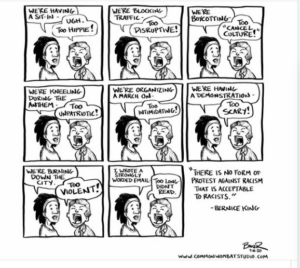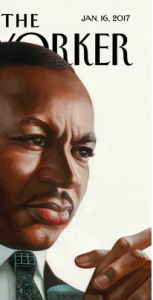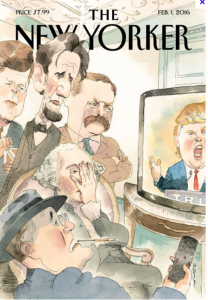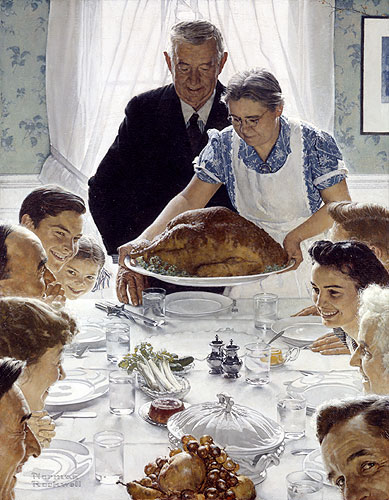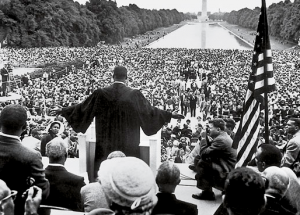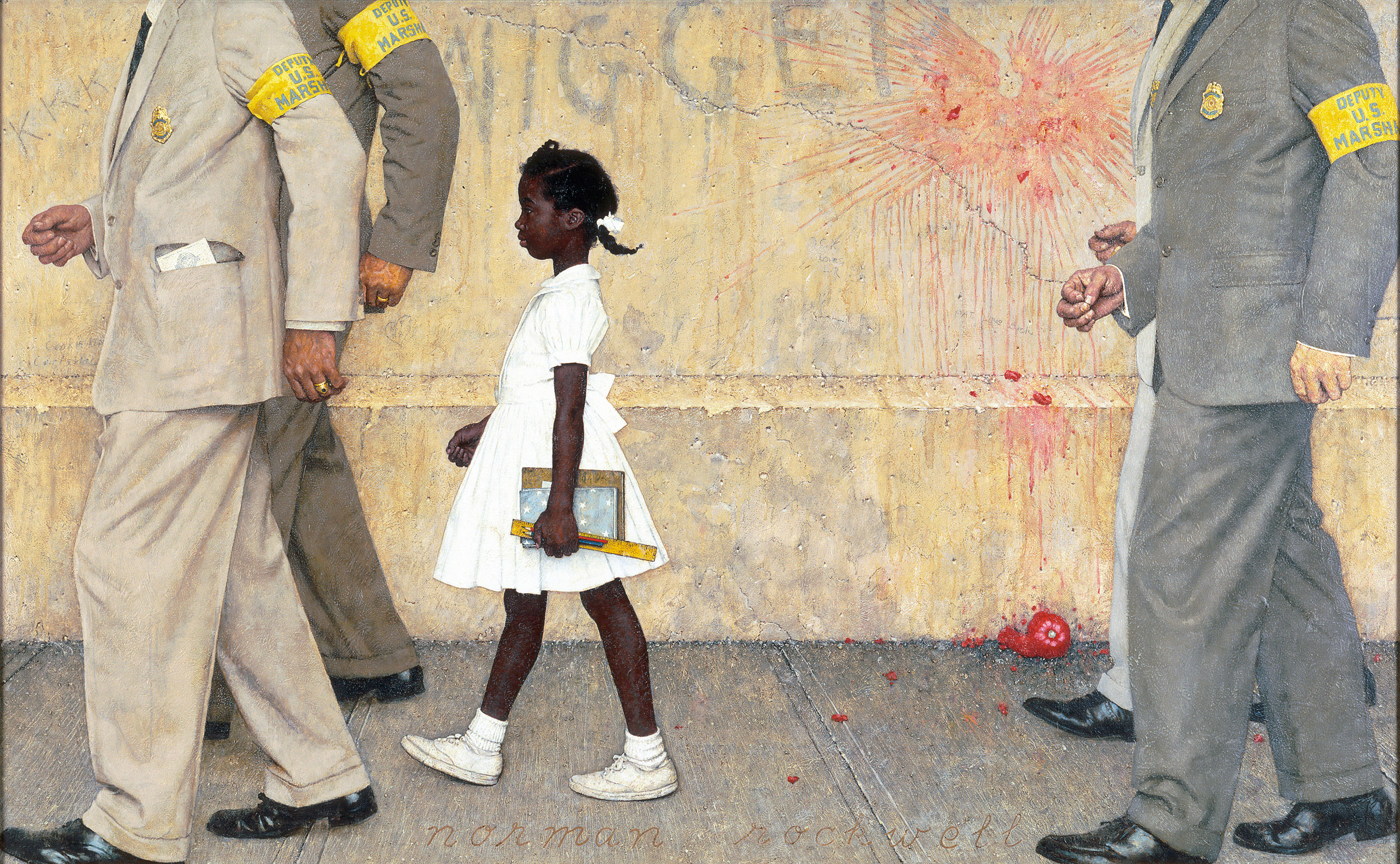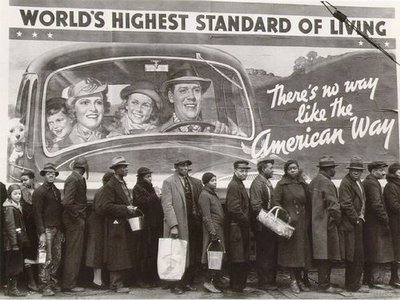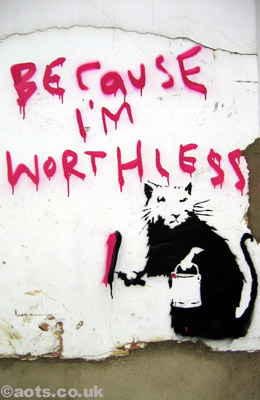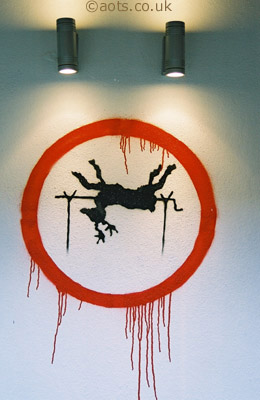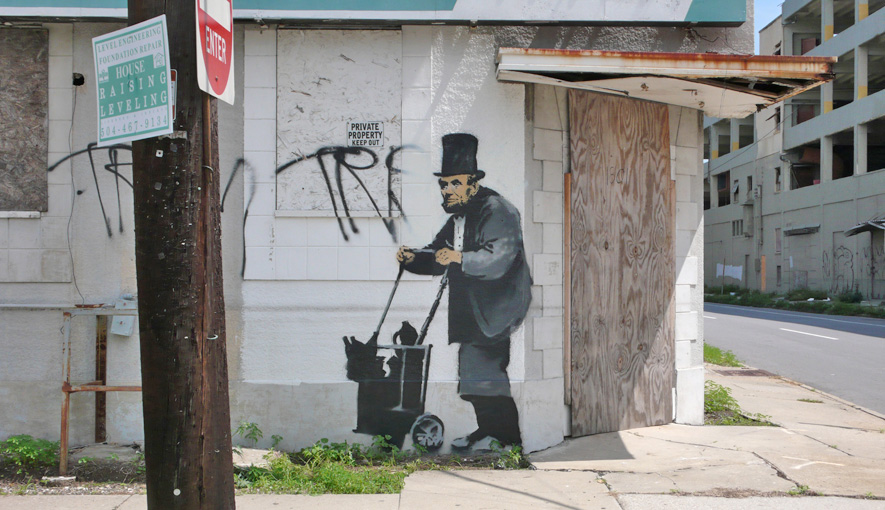The question is : How did the artist help form the narrative of Thanksgiving ?
Look at the presentation
“They began now to gather in the small harvest they had, and to fit up their houses and dwellings against winter, being all well recovered in health and strength and had all things in good plenty. For as some were thus employed in affairs abroad, others were exercised in fishing, about cod and bass and other fish, of which they took good store, of which every family had their portion. All the summer there was no want; and now began to come in store of fowl, as winter approached, of which this place did abound when they came first (but afterward decreased by degrees). And besides waterfowl there was great store of wild turkeys, of which they took many, besides venison, etc. Besides, they had about a peck a meal a week to a person, or now since harvest, Indian corn to the proportion. Which made many afterwards write so largely of their plenty here to their friends in England, which were not feigned but true reports”
William Bradford,* Of Plymouth Plantation
* William Bradford was the governor of the Plimoth Colony.
Referring to the 1623 harvest after the nearly catastrophic drought, Bradford wrote:
“And afterwards the Lord sent them such seasonable showers, with interchange of fair warm weather as, through His blessing, caused a fruitful and liberal harvest, to their no small comfort and rejoicing. For which mercy, in time convenient, they also set apart a day of thanksgiving… By this time harvest was come, and instead of famine now God gave them plenty … for which they blessed God. And the effect of their particular planting was well seen, for all had … pretty well … so as any general want or famine had not been amongst them since to this day.”
The artist : Jean Leon Gerome Ferris (1863-1930) was an American painter known for his series of 78 scenes from American history, entitled The Pageant of a Nation, the largest series of paintings on American history by a single artist.
Ferris enrolled in the Pennsylvania Academy of the Fine Arts, and his decision to paint historical scenes was the result of the influence of his namesake, Jean-Leon Gérôme.
By 1895, he had gained a reputation as a historical painter and he stated a series of paintings that told a historical narrative. In 1898, he sold one, but later decided to keep the paintings together as a series.
He sold the reproduction rights to various publishing companies which sold many copies of his paintings, such as postcards and calendars. As a result, his work became visible and popular. It contributed to the American narrative.
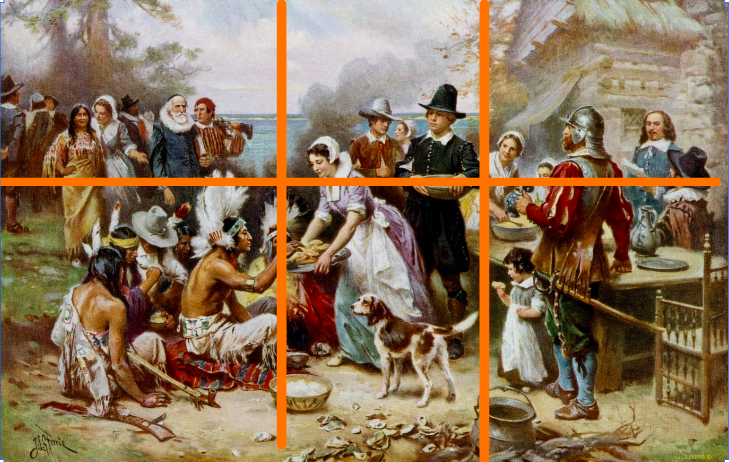
Two levels
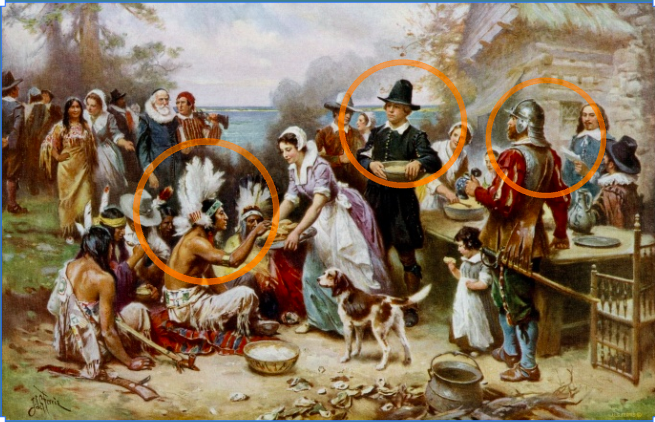
Different men
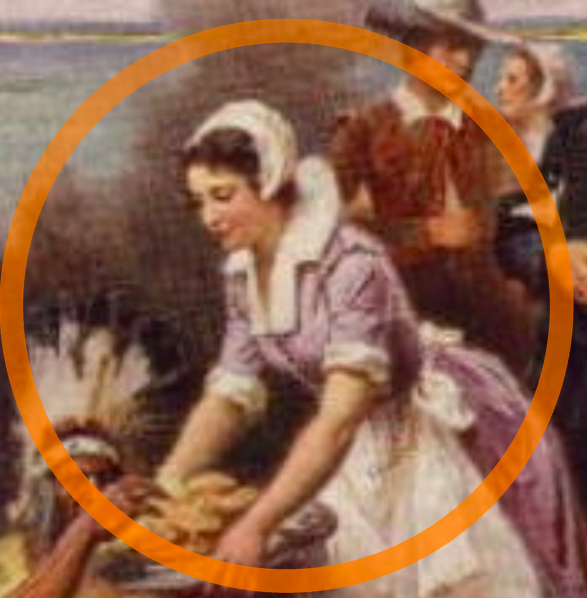
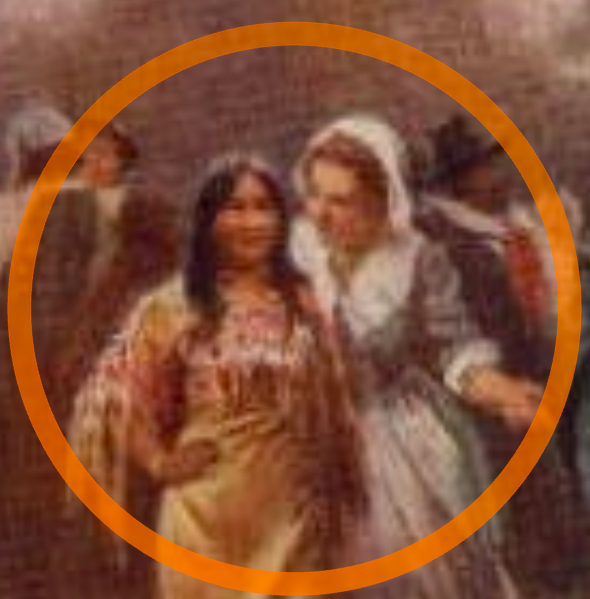
Thanksgiving ceremonies :
May 1541
Spanish explorer F. Vasquez de Coronado led 1,500 men in a thanksgiving celebration at the Palo Duro canyon, in what is known now as the Texas panhandle. The expedition he was leading was in search of gold.

French Huguenots settlers celebrated a thanksgiving ceremony in a settlement in what is nowadays called Jacksonville, Florida in 1564. They were raided by a Spanish group in 1565 and their colony was subsequently destroyed.
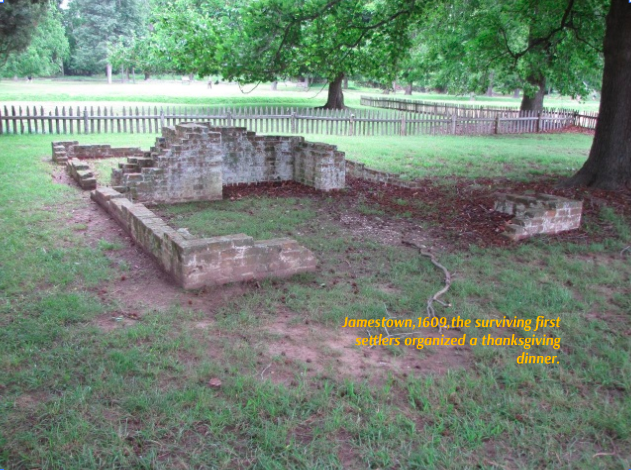
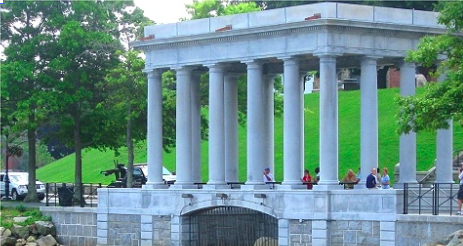
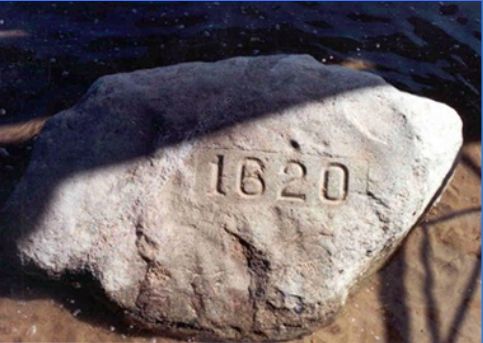

Lincoln’s Thanksgiving proclamation here
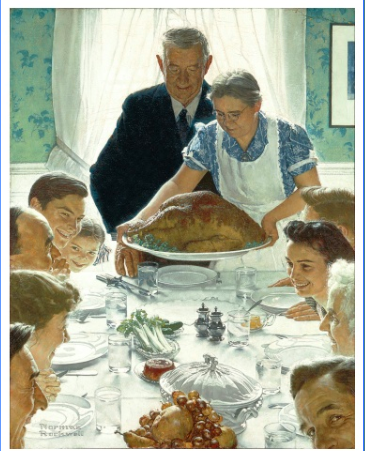
The First Thanksgiving, New Yorker cover, here

